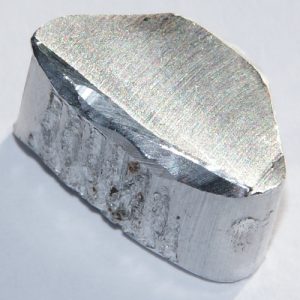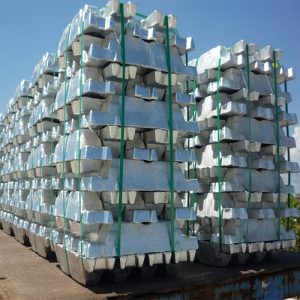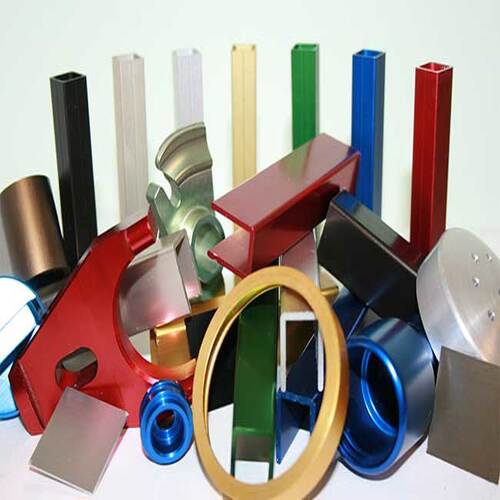Aluminum is a relatively young metal that was mined for the first time in 1854 and was first widely used in industries in 1898. Aluminum is one of the most widespread metals on earth and after steel it is the most widely used metal in the world. Aluminum is a silver-colored metal, light and highly malleable. One of the characteristics of aluminum is resistance to rust.
cDurable, light and practical. Combining these three features in one material is not that simple, but in fact aluminum has these three together and these three features have turned it into a unique metal and one of the key engineering materials. You see this metal in different forms when you wake up in the morning. At home, in cars, trains and airplanes, in the mobile phone and computer that you use every day, on the shelf inside the refrigerator, in modern appliances and…
To get to know aluminum, it is better to first know what aluminum is.
The correct spelling of aluminum is (Aluminium) with the chemical symbol AI Is shown. Aluminum is one of the elements of the periodic table with atomic number 13. The density of aluminum is almost one third of the density of steel. This element belongs to the group of metals with good malleability and silver surface.
Aluminum is the third most abundant element on the earth’s crust after oxygen and silicon. Pure aluminum is very reactive and therefore the amount of pure aluminum is very low and difficult to find. Aluminum or AI in its free state is considered a precious metal and more valuable than gold.
Executive structures with aluminum metal have played a colorful role in the aviation industry and road and rail transportation, and the existence of this element is mandatory in the stability and resistance of the structure.

One of the most important features of aluminum profile is its malleability. Today, this material has replaced iron due to its flexibility. The light and suitable weight of the aluminum profile is another of its practical features. Today, this material has replaced iron due to its flexibility.
Aluminum profiles have high strength and resistance, and for this reason, they are suitable for use in residential and office buildings.
Aluminum profiles are elegant and stylish, and their installation is quick and easy. They are also non-flammable and are considered a safe and suitable option for installation in kitchens. Double-glazed or multi-glazed glass can also be installed on aluminum windows.
Aluminum profile is generally produced by extrusion method. To produce this product, aluminum billet is used as a raw material. Double-glazed or multi-glazed glass can also be installed on aluminum windows. Then it is passed through special molds to take the desired shape. In this way, the raw material changes shape and becomes the desired shape. Due to the application of thermal process and high pressure on aluminum metal, the raw material is completely deformed and as a result aluminum profile is produced.
Features of aluminum metal
In general, aluminum is a soft, light and very strong metal. One of the most important main properties of aluminum is its small volumetric mass or in other words low molecular mass and corrosion resistance. This feature has caused pure aluminum to flourish in the construction of doors and windows.
The malleability and fluidity of aluminum and its alloys make this product formable without brittleness. Thin-walled aluminum parts are produced through pressure casting and can be cold-formed.
Aluminum is one of the metals that is not flammable. And the light weight of aluminum makes it easy to transport this metal. The color of aluminum is matte silver or gray, and its turbidity is due to the presence of an oxidation layer on the surface. You should know that aluminum metal can reflect light.
Another feature of aluminum metal is its elasticity. The aluminum element returns to its original state after every impact or force. The reasonable price of aluminum has led to the widespread use of this metal in various industries. Aluminum, like some other metals, is not toxic and does not cause allergies, and no signs of poisoning have been observed in case of its use and operation.
Another property of aluminum metal is its high resistance to corrosion. Aluminum metal is known as the sixth flexible metal in the world and the periodic table. This element is non-magnetic and has no ignition capability. Aluminum can be connected by welding, soldering, gluing and riveting.
One of the most important features of aluminum profile is its malleability. Today, this material has replaced iron due to its flexibility. The light and suitable weight of the aluminum profile is another of its practical features. Today, this material has replaced iron due to its flexibility.
Aluminum profiles have high strength and resistance, and for this reason, they are suitable for use in residential and office buildings.
Aluminum profiles are elegant and stylish, and their installation is quick and easy. They are also non-flammable and are considered a safe and suitable option for installation in kitchens. Double-glazed or multi-glazed glass can also be installed on aluminum windows.

Aluminum profile is generally produced by extrusion method. To produce this product, aluminum billet is used as a raw material. Double-glazed or multi-glazed glass can also be installed on aluminum windows. Then it is passed through special molds to take the desired shape. In this way, the raw material changes shape and becomes the desired shape. Due to the application of thermal process and high pressure on aluminum metal, the raw material is completely deformed and as a result aluminum profile is produced.
Physical and chemical properties of aluminum
The electrical resistance of aluminum is significantly higher than that of copper and other conductive metals. The electrical resistance characteristic of aluminum is used to produce high voltage power lines. But in most applications due to the low melting point or melting temperature of aluminum and the high expansion coefficient of aluminum, the use of this conductive metal is considered a limitation.
Lightness of weight: In an equal volume, the weight of aluminum is approximately one third of the weight of steel, copper and brass. One cubic meter of aluminum weighs about 77 kilograms. While the weight of one cubic meter of steel is 220 kg.
Light weight in aluminum products is considered one of the most important advantages. The light weight of aluminum, in addition to reducing its transportation costs, has made it competitive with steel in terms of price.
High strength-to-weight ratio: A combination of high strength and light weight is found in only a few materials in nature. The high strength of some aluminum alloys is comparable to the strength of steels. This advantage has caused aluminum to find various applications in the automotive, defense and military, aerospace, construction, transportation and packaging industries.
Malleability: Aluminum can be changed by different methods of forming metals. Aluminum is easily made into tubes, rods, plates, foils and castings of various shapes. For example, 0.004 mm thin foils are easily possible with the rolling method.
Aluminum can also be connected by welding, soldering, gluing and riveting methods.
Elasticity: Some aluminum alloys can return to their original state after removing the force if they are affected by force or impact in a certain range. This characteristic of aluminum is widely used in the design and manufacture of products that require strength and flexibility.
Corrosion resistance: the surface of aluminum parts does not rust, because aluminum combines with oxygen in the air and produces a compact layer of aluminum. This compact layer, which is only a few thousandths of a centimeter thick, prevents oxygen from coming in contact with the lower layers of aluminum and prevents further oxidation of the part.
Therefore, oxidizing the surfaces of aluminum parts prevents its corrosion in different environments such as humid air, sea water and a wide range of other physical and chemical substances.
High thermal conductivity: aluminum is the most conductive metal after silver, copper and gold, because of this property it is used in kitchen utensils, water and oil heat exchangers.
Non-toxicity: Solid aluminum alloys that have a surface oxide layer are non-toxic and are widely used in the food, pharmaceutical and health packaging industries.
In addition, aluminum has a smooth and non-porous surface that prevents the absorption of foreign substances and bacteria. Aluminum can be in very close contact with food without affecting its taste, color and smell.
Aluminum extraction
How to extract aluminum is a very important issue. Aluminum is a very reactive type of metal and its extraction and separation is very important. Aluminum can be separated from bauxite with the help of carbon. To separate or extract aluminum, it is better to put the bockite stone in a solution and bring it to a high melting point of about 2000 degrees Celsius, so that pure aluminum can be separated easily using electric current.
Technical specifications of aluminum:
- name: aluminum
- Atomic number: 13
- Appearance: A type of soft silvery metal
- Tensile strength: 9 kilograms per square millimeter
- Chemical symbol: Al
- Hardness: 16 Brinell
- Yield stress: 3 kg/mm2
- Elongation to tear 45%
- Atomic mass: 26.9815 grams
- Volumetric mass at 20 degrees Celsius is 2.70 grams per cubic centimeter
- Elastic modulus: 62.053 GPa at zero degree Celsius temperature
- Poisson’s ratio: 0.35
- Elongation to tear 45%
- melting point: 933 degrees Kelvin
- Boiling point: 2792 degrees Kelvin
- Plasma temperature: 7850 degrees Kelvin
Many uses of aluminum:
The reason for the resistance to weight ratio of aluminum is that it is used in different places. The light weight of aluminum means that less power is used to move and this leads to more fuel efficiency. The reason for the resistance to weight ratio of aluminum is that it is used in different places.

Applications of aluminum
Aluminum is the most useful metal after iron in terms of structure and quality. Aluminum has been widely used in the industry, but in general, to express its most important uses, the following can be mentioned:
In recent years, the use of aluminum alloys for the construction of car bodies has grown significantly. The reason is the reduction of fuel consumption and car weight.
Marine industries: which is the most widely used metal for the production of engines and boat parts due to its lightness and resistance to corrosion.
packing: For food packaging, including canned goods. The packaging industry is the second demander of aluminum metal after the transportation industry in the world.
Transportation industries: For example, rails and train cars are made of aluminum.
building industry: which is very prosperous in the construction market due to its long life and many advantages of the aluminum element. Today, more than 35% of aluminum consumed is used in the construction industry. Low weight, suitable formability and high resistance to corrosion are among the important advantages of aluminum in the construction industry.
To prepare all kinds of insulation and as a good heat conductor
The construction of commercial and military airplanes due to the high resistance of this metal against tension
Refining and galvanizing steel
In the power industry and the tower of high voltage cables and power transmission lines
Aluminum uses:The light weight of aluminum means that less power is used to move and this leads to more fuel efficiency.
- Transportation
- Consumer goods
- Packages
- industry
General characteristics of aluminum
The relatively low price and high strength of aluminum and its alloys have caused aluminum to be the most used among non-ferrous metals in the production of parts.
Aluminum parts can be made by sand casting, pressure casting, cold working or hot working and extrusion.
Aluminum alloys are capable of machining, pressing, soft soldering, hard soldering and welding. Pure aluminum melts at a temperature of 660 degrees Celsius, which is very suitable for the production of parts by sand casting or pressure casting.
Rolled aluminum sheet. Aluminum is available in the market in the form of sheet, wire, belt, foil, round rod, pipe and construction profiles. In welding or soldering aluminum parts, special points should be paid attention to, because not all aluminum alloys can be welded.
The corrosion resistance of aluminum alloys depends on the quality of the thin oxide coating that is formed on them. Since aluminum is an active metal, this coating quickly forms on it. Scratching or wearing this coating makes it possible to corrode this metal. By anodizing method, a thick oxide coating can be created on the surface of aluminum.
Aluminum or aluminum?
There is no difference. Aluminum is a common metal in industrial and non-industrial applications. The use of different types of aluminum is in accordance with the grading of aluminum, and for each project according to its function, a type of pure aluminum or its various alloys is used.
When buying all types of aluminum, you should pay attention to points such as corrosion resistance, strength and strength, as well as machining.
final word
Aluminum is a completely natural substance, so it can be found in all stones in very small amounts, so it does not have any harm to the environment, and it can be said that 100% of this material can be recycled in such a way that recycled aluminum is collected and They are taken to recycling centers, where they are transformed into aluminum ingots through several stages, including sorting, crushing, melting and casting, and can be reproduced and transformed into different stages.
Click to download the PDF




